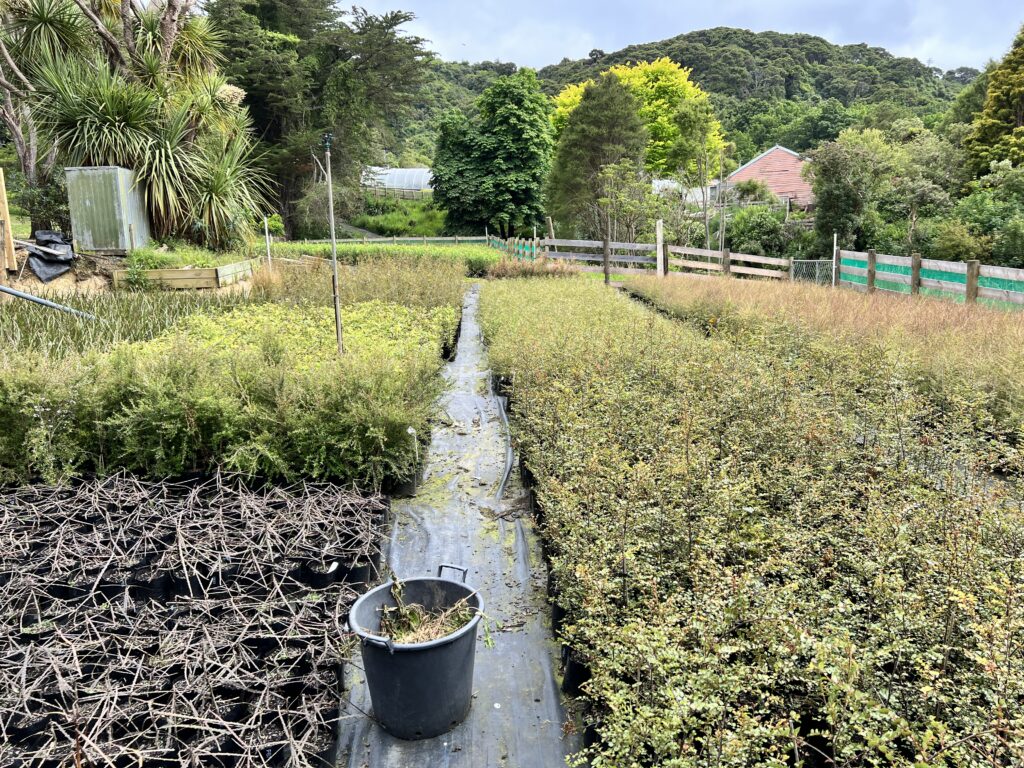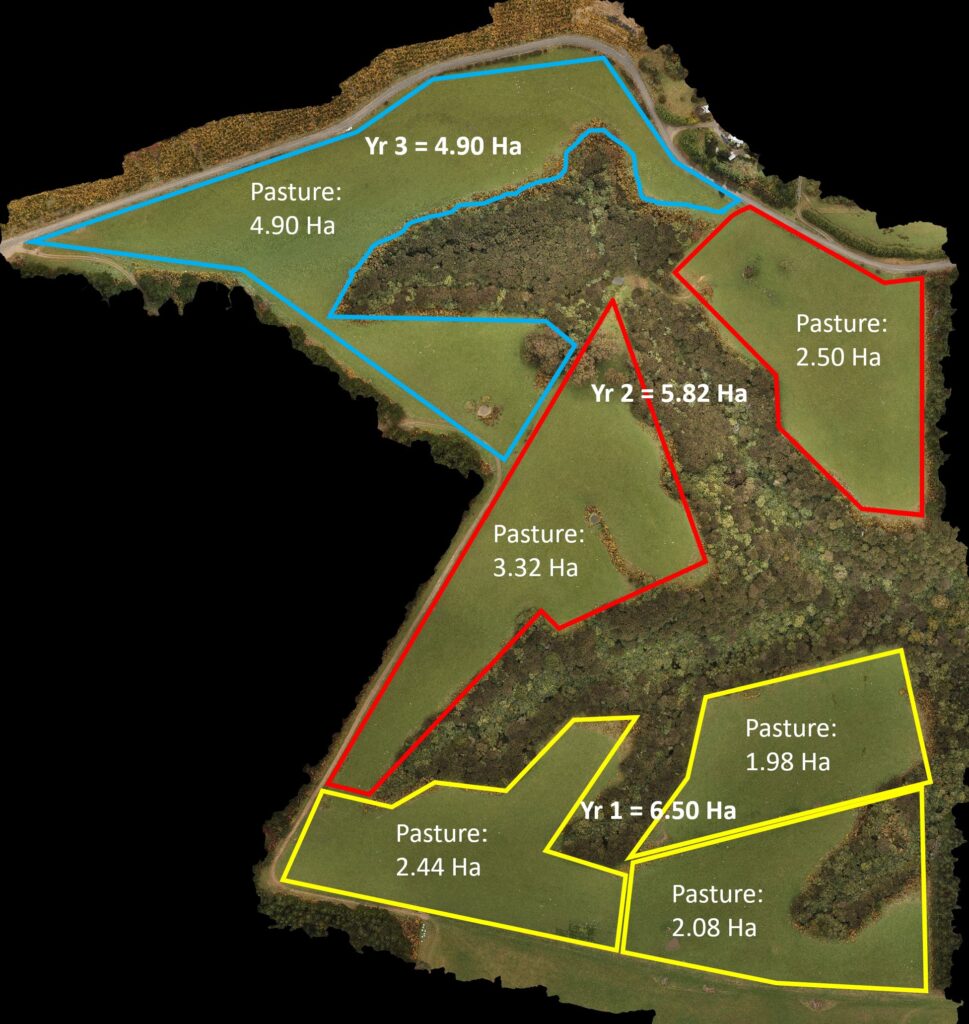Nursery & Planting Program Development
Following my meeting and Kauri forest proposal presentation with Scion in Rotorua in August 2022, I met with Scion’s Toby Stovold and Phil Dunn, the owner of Ribbonwood Nurseries on the property.

Toby has many years experience in forestry and Phil has been growing indigenous plants in Dunedin for more than 40 years. Together, these experts discussed the types and spacing for the nurse trees that will provide protection for the Kauri. I guided them around the property and furiously took notes for the preparation of the planting plan.
They landed on a 3-year nurse tree planting program, using varieties that were already growing in gullies. The nurse trees will be planted at 3 m spacing, resulting in revegetation of the pasture with 1,100 stems/ha. In the fourth year I will return to the start and plant the Kauri amongst the 3 year old nurse trees. Because this is a permanent forest, I am not aiming for maximum yield, so I can reduce the density of the Kauri, allowing them to be thinned over time so that these iconic forest giants can grow to their full potential. As the Kauri grow, they will crowd out the nurse trees, eventually dominating the land that is currently pasture.

Contour planting of both the nurse trees and the Kauri will be used instead of the rows and columns of trees found in a forest planted for yield. Phil Dunn suggested that I talk to Glen Riley from Habitat Restorations Aotearoa to discuss the implementation of the planting program. I met with Glen the following afternoon, and he was excited by the existing forest and the opportunity to work on the project.
Glen Riley talked to me about the need to reduce the feral animals on the property (hares, possums, rats, stoats, and the occasional goats and wild pigs). A local hunter, Bryan Scott had already contacted me to ask if he could continue to shoot hares. Fewer hares on the place, means the trees will be less at risk. I talked with Glen about installing a hare-proof mesh fence around the boundary line, but he explained that it would still require monitoring for penetrations and maintenance once there was an incursion point. Glen recommended using bio-degradeable tree guards, which I’ve decided will be the anti-feral solution I’ll use.
Glen will start a trapping program to reduce concentration levels of feral animals, and to provide his staff with trap setting experience. As we walked through the existing indigenous forest, he observed possum claw marks on the trunks of some trees, but did point out that if the area was overrun with possums, then the spring growth on the Tree Fuchsia (Kotukutuku) would be stripped. The Tree Fuchsia were in flower in December, and Tui were feeding on the nectar as we wandered around.

15 December 2022
